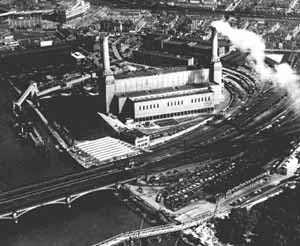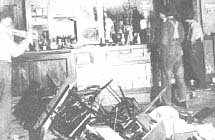

Famous Cases | Historical Tales | Vampires | Zombies
 |  |
Famous Cases | Historical Tales | Vampires | Zombies |
 |
| Public Health Notice, Chicago 1908 |
 |
| London's Battersea Station, the end of the line for thousands of vampires |
The vampire population boom forced world leaders to take drastic measures to try and slow the spread of the plague. U.S. President Theodore Roosevelt ordered a curfew in every city and town in the country. At dusk across the land, curfew sirens rang out as children ran in from their play and cities fell dark. The curfew was economically devastating for restaurants, theaters, bars and nightclubs, and led to a mini-Depression. President Roosevelt also authorized an emergency vampire relief fund, with most of the money going to the FVZA to hire more people and upgrade their equipment. In addition, every branch of the Armed Forces was called into service to help the Agency.
Large cities were hardest hit by the vampire explosion. Early each morning in London, boatmen would make their way west along the fog-shrouded Thames, stopping at various wharfs to pick up vampires that had been destroyed the night before. The sight of a withered old boatman slipping silently through the fog, his boat heaped with vampire corpses, was one of the indelible impressions of the day. Eventually, the vampire corpses would be brought to the Battersea power station for incineration. At its peak, Battersea station was burning more than 100 vampires a day.
 |
| NY Times Headline, 1905 |
 |
| FVZA Agents take down a "curfew-buster" |
In general, attempts to skirt the law were the exception and not the rule. Most people in the U.S. honored the curfew, forcing blood-starved vampires to become more brazen, and in the process, more vulnerable. After reaching a peak in 1905, the vampire population stabilized somewhat, before growing again through the Great Depression and the war, until science trotted out its greatest weapon: the vampire vaccine.